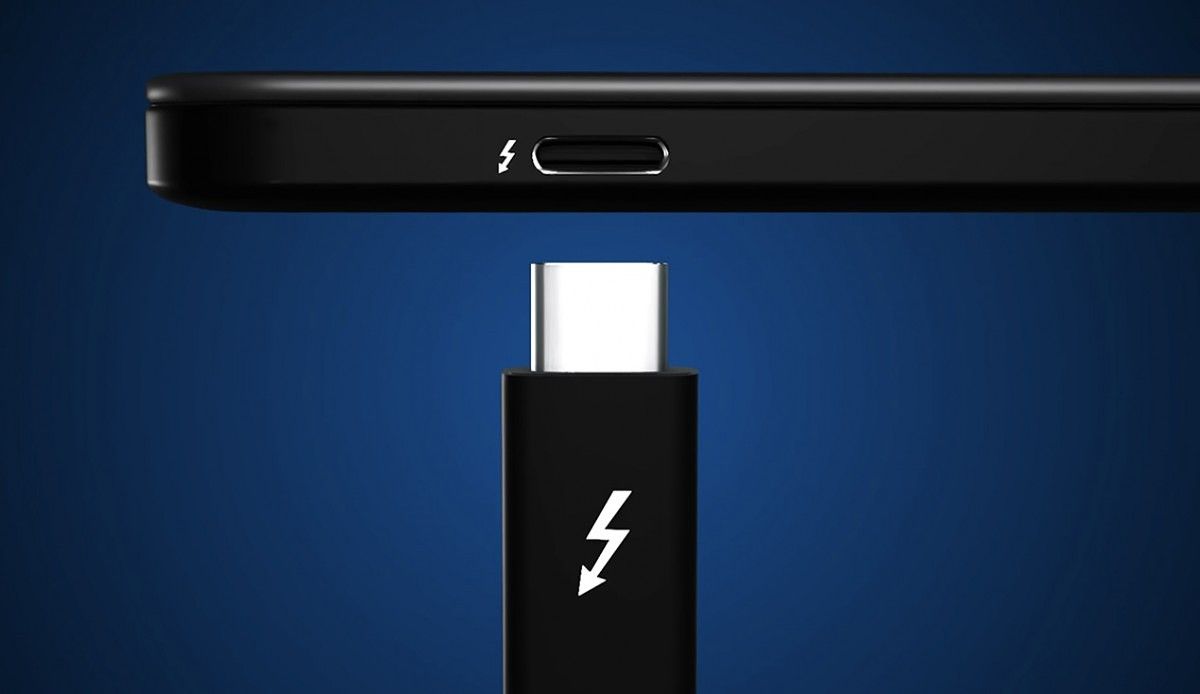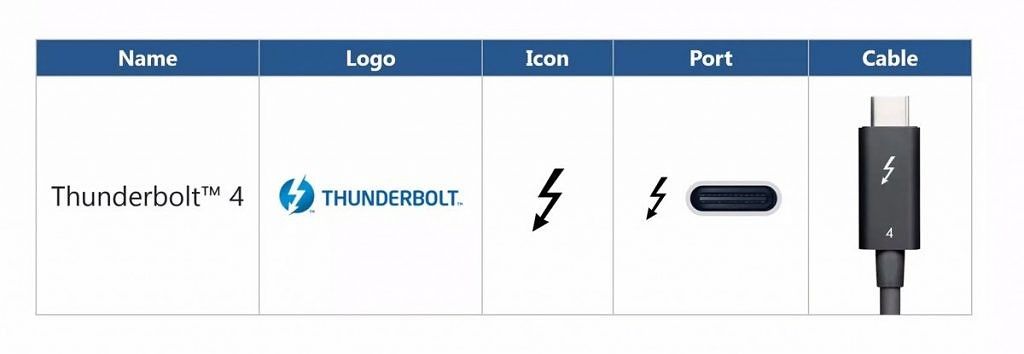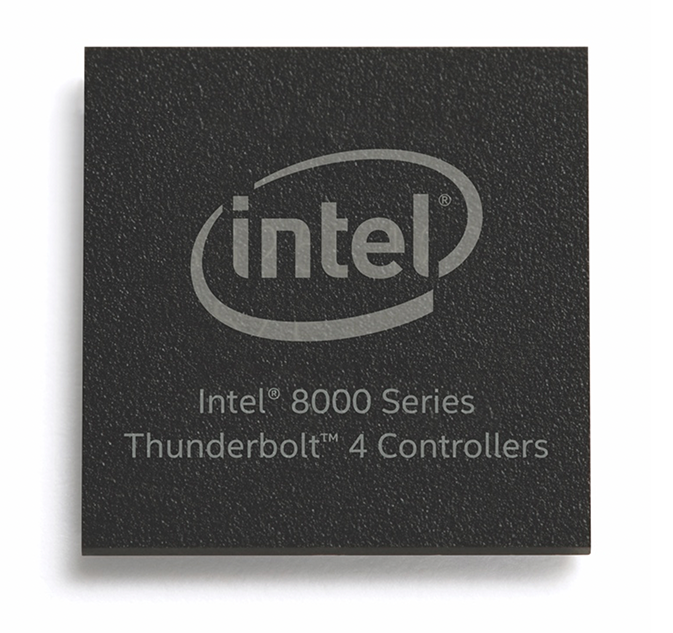Thunderbolt is a cross-platform data and power transfer standard developed by Intel. The protocol is often found in laptops and PCs and can be used to connect DisplayPort-compatible devices including external monitors as well as PCI Express (PCIe) peripherals including external graphics cards, hard drives, Wi-Fi or Ethernet connectors, over a USB-C port. The current generation of the protocol – Thunderbolt 3 – supports upstream or downstream bandwidths of up to 40Gbps and serves as the basis for USB4 specifications. Thunderbolt 3 was announced in late 2015 and an update has been long due. Intel spoke of the Thunderbolt 4 while unveiling its Tiger Lake mobile processors at CES 2020 but without revealing any details. Now the day has come and Intel is finally announcing the Thunderbolt 4 connectivity protocol along with new 8000 series controllers for backward compatibility with Thunderbolt 3 and USB 3.1 (and upwards) devices.
The new protocol doubles down on the minimum video requirements as compared to the previous generation and requires support for at least two 4K monitors or a single 8K monitor. The standard also requires a minimum data transfer rate of 32Gbps supported via PCIe and 3,000Mbps for storage transfer speeds.
Although Thunderbolt 4 delivers data, power, and video signals over a single cable with the same transfer rate as Thunderbolt 3, it does bring improvements over the previous generation. More specifically, Thunderbolt 4 is set to bring improvements in terms of versatility and security and with this, Intel desires to set a new standard for USB connectivity across the PC industry.
Benefits of Thunderbolt 4
Versatility
One of the biggest improvements with Thunderbolt 4 is that it will now support USB extension hubs and docks with up to four Thunderbolt 4 ports as compared to just one with Thunderbolt 3. This essentially means that any PC or laptop with a single Thunderbolt 4 port can support up to four enhancements like external SSDs, external GPUs, monitors, etc. powered by the protocol. To achieve that with previous versions, users had to "daisy chain" Thunderbolt accessories – i.e. connect them in series – one after another.
In addition to these improvements, Intel now requires compatible PCs to support at least one Thunderbolt 4 port capable of charging. In addition, a connected accessory like a keyboard or mouse must be able to wake the PC from a state of sleep.
Security
Intel necessitates OEMs or developers adopting Thunderbolt 4 Intel's Virtualization Technology for Directed I/O (VT-d) technology to fend off any physical direct memory access (DMA) attack. This basically requires tailored capabilities built into the processor to block any unauthorized access to the system memory. This defense is vital as the system memory is shared across a host of PCIe devices – including the ones connected externally via hot-swap plugs (or ports in this case), making the memory vulnerable to physical interception or sabotage.
Thunderbolt 4 uses hardware-level protection supported by kernel-level DMA remapping (DMA-r). The latter means that each peripheral gets access to an isolated block on the system memory such that it is not shared with other devices. This prevents other devices from accessing or reading/writing the memory blocks of other devices. Intel's VT-d and DMA-r technologies are supported on operating systems including Windows 10 versions 1803 (RedStone 4) and upwards, macOS 10.8.2, and on Linux since Kernel version 4.21.
Expandability
Last year, Intel opened up Thunderbolt 3 as a royalty-free protocol. It was later adopted as the basis for USB4, the upcoming USB transfer protocol that is aimed at replacing standard USB ports with USB Type-C ports for the sake of simplicity and uniformity. As expected, Thunderbolt 4 is also fully compliant with USB4 but increases its minimum performance requirements.
However, Intel says that Thunderbolt 4 will also work without Intel CPUs, thanks to the new 8000 series controllers launched by Intel. These include Intel's new JHL8540 and JHL8340 host Thunderbolt 4 controllers for OEMs and JHL8440 device controller meant for accessory makers. With the help of these controllers OEMs using non-Intel chips on their PCs and laptop, including AMD and potentially ARM chips for laptops.
This means Apple might still be able to offer Thunderbolt 4 support on its MacBook models even if commences using its custom silicon, as confirmed during the online WWDC event last month.
Thunderbolt 4 Availability
Even though the Thunderbolt 4 is projected to be available across devices with processor by different chipmakers, Intel will reserve the bragging rights for the first PC that comes with support for the protocol. The first set of laptops with Thunderbolt 4 will be powered by Intel's Tiger Lake processors and available later this year. The catalog will include laptops based on Intel's innovation model called "Project Athena," which was announced at Computex 2019 and is essentially a successor to the "Ultrabook" branding. Project Athena presents a set of features and performance indicators for the OEMs to target for a rich and efficient mobility experience.
Thunderbolt 4 developer kits are now available while Intel has also opened certification testing which is mandatory for consistent performance across all devices.



